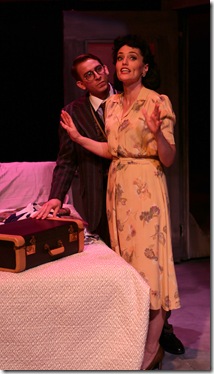Who Killed Spalding Gray? revels in truth, untruth and what lies between
So who did kill Spalding Gray, the American monologist who died in 2004? Considering that he committed suicide by jumping off the Staten Island Ferry in New York, you’d think the question unnecessary.
Turns out the question is very much necessary according to Daniel MacIvor’s disarmingly idiosyncratic solo show about himself, Gray, a guy called Howard, and some pretty big issues including death, self-forgiveness and truth.
Principal among those issues is truth. The question of who killed Gray is, after all, a question about the truth, metaphoric or otherwise, of what happened, and as MacIvor makes clear, certainty about any situation or person is a moving target. While that’s hardly a stop-the-presses insight, the ways in which the playwright frames that target make for a fine 85 minutes.
The show, directed by Daniel Brooks, is a skein of stories and enacted pieces that link MacIvor, Gray and Howard in progressively inextricable fashion.







